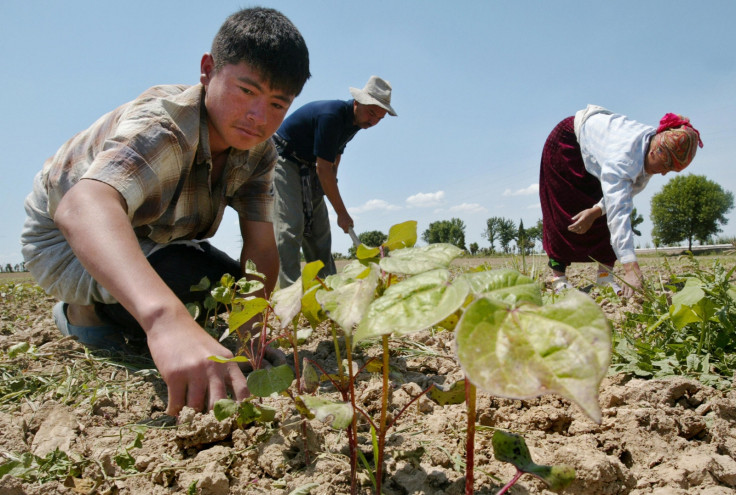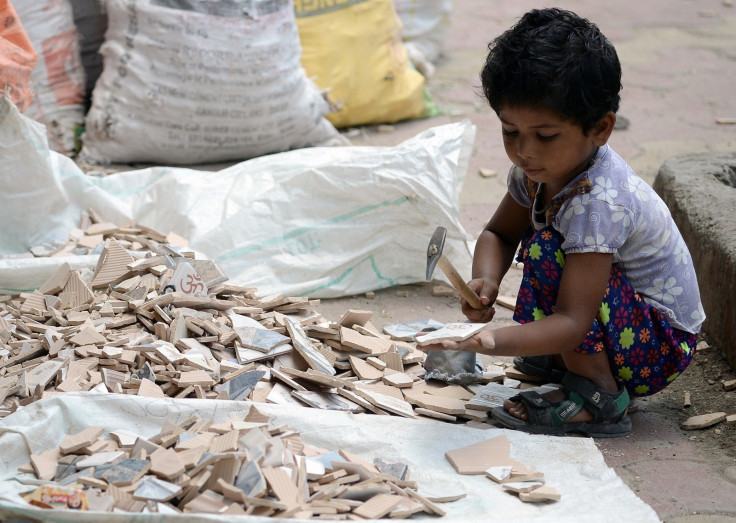World Day Against Child Labour 2015: Why we need to keep children out of work and in education

Uzbekistan is one of the world's leading cotton growers. For years, the harvest has relied on forced labour to help farmers meet government-set quotas, but due to pressure from human rights organisations, the country has cut down on underage workers. Despite this, schoolchildren, albeit in smaller numbers, continue to work in the fields to help pick the "white gold" – to the detriment of their education.
According to Anti-Slavery International, children picking in last year's harvest who ran away from the fields or refused to work were threatened with expulsion from school or college. "We're really afraid of getting expelled from school," a 14-year-old boy from Uzbekistan's southern Kashkadaria province told the organisation. "Every September 2, the first day of school, the director warns us that if we don't go out to pick cotton we might as well not come back to school."
Child workers in Uzbekistan are some of the 168 million children trapped in forced labour worldwide, facing a life deprived of education. A report International Labour Organisation published this week stated the lack of education remains one of the biggest risks to future job prospects. According to the ILO, child workers are more likely to settle for low-paying jobs or unpaid work for the family in the future.
Even after Uzbekistan banned child labour, the problem persists. Jakub Sobik, a researcher for Anti-Slavery International, told IBTimes UK: "There are still cases of children being sent out to work in the fields as child labour has not been eradicated completely, we can quite safely say that."

"The difference between a few years ago and now is the Uzbekistan government has stopped using children on a systematic scale," he said. "But there are cases where local administrations send children out because they are under big pressure to reach their targets."
Of the children employed globally, 120 million were aged between five and 14 years old. "Of those, many did not attend school at all, while others combined school and work but often to the detriment of their education," said Jose Ramirez Machado, a senior programme officer for the ILO's International Programme on the Elimination of Child Labour.
"Lacking adequate education and skills, as adults many of these child labourers will be more likely to end up in poorly paid, insecure work or to be unemployed. There is also a high probability that, in the future, the children of these children will end up in child labour too. Breaking this cycle of disadvantage is a global challenge and education has a key role to play."
The benefits of keeping children in school are far-reaching as drivers of social and economic development. If all students in low income countries left school with basic reading skills, 171 million people could be lifted out of poverty. This is equal to a 12% cut in global poverty, according to Unesco. Just one extra year of school increases an individual's earnings by up to 10%.
Specifically investing in girls' education not only helps close the gap in gender inequality, but also raises crop yields. Research by the International Food Policy Research Institute suggests investing in girls' education in sub-Saharan Africa could boost agricultural output by 25%.

One of the most effective ways to improve global health – including reducing infant and maternal mortality – is through education. Every extra year of a mother's schooling reduces the probability of infant mortality by five percent, while the child of a literate mother is 50% more likely to live past the age of five.
Education also positively impacts peace and democracy. If the enrolment rate for secondary schooling is 10 percentage points higher than the average, the risk of war is reduced by around three percentage points, according to research by the World Bank. Literacy encourages more people to exercise their civil rights and participate in the democratic process, while vocational education and training provides the skills necessary for better employment prospects. This, in turn, has a beneficial impact on local and national development.
The key to ending child labour is free, universal and compulsory – and good quality – education. Attendance at school removes children from the labour market, creating a foundation for the employable skills needed for future gainful employment.
Under-resourced schools are a barrier to these benefits, however. "Wholly inadequate school facilities, large class sizes, and lack of trained teachers constrain rather than enable learning, and act as a disincentive to school attendance," Ramirez Machado said.
"For far too many children the provision of education stops at primary level simply because of the physical absence of accessible schools, particularly in rural areas. This inevitably leads to children entering the labour force well before the legal minimum age for admission to employment. National policies therefore need to ensure adequate investment in public education and training."
© Copyright IBTimes 2025. All rights reserved.






















